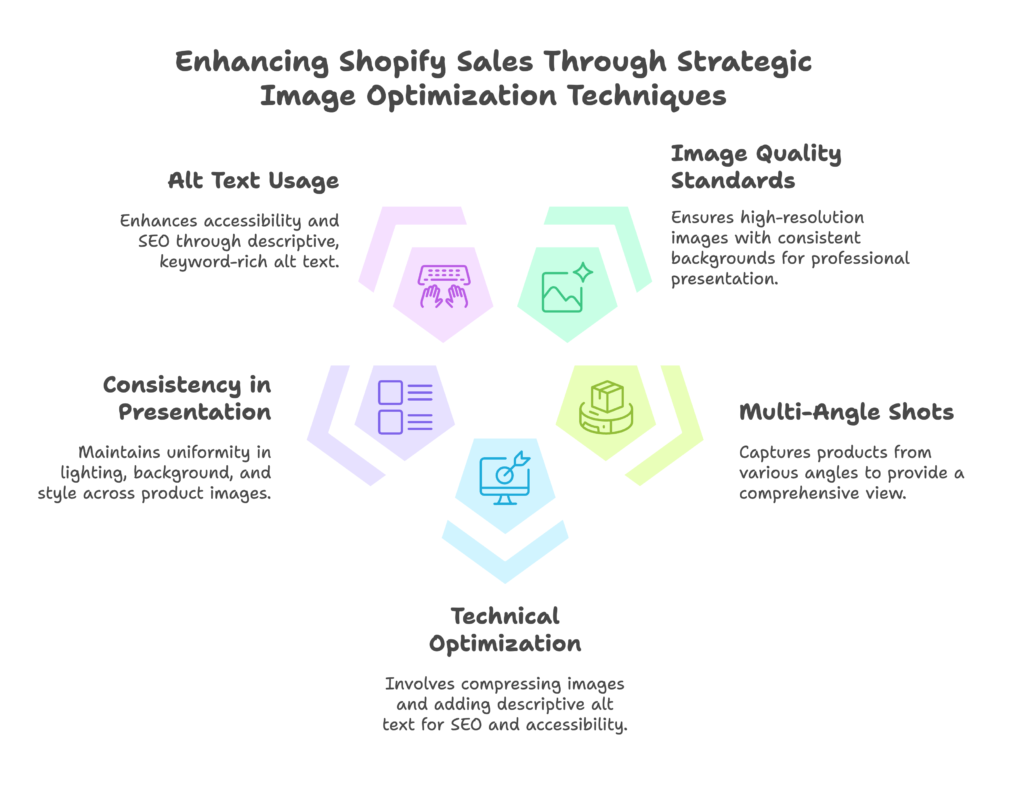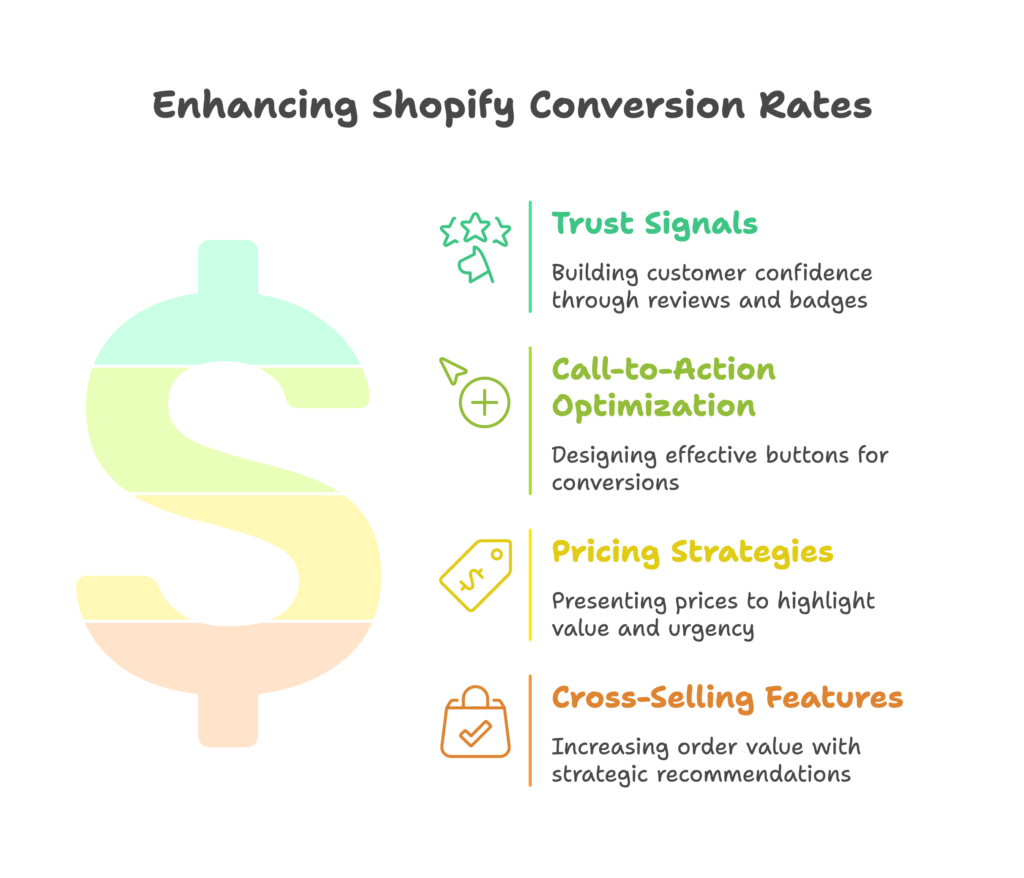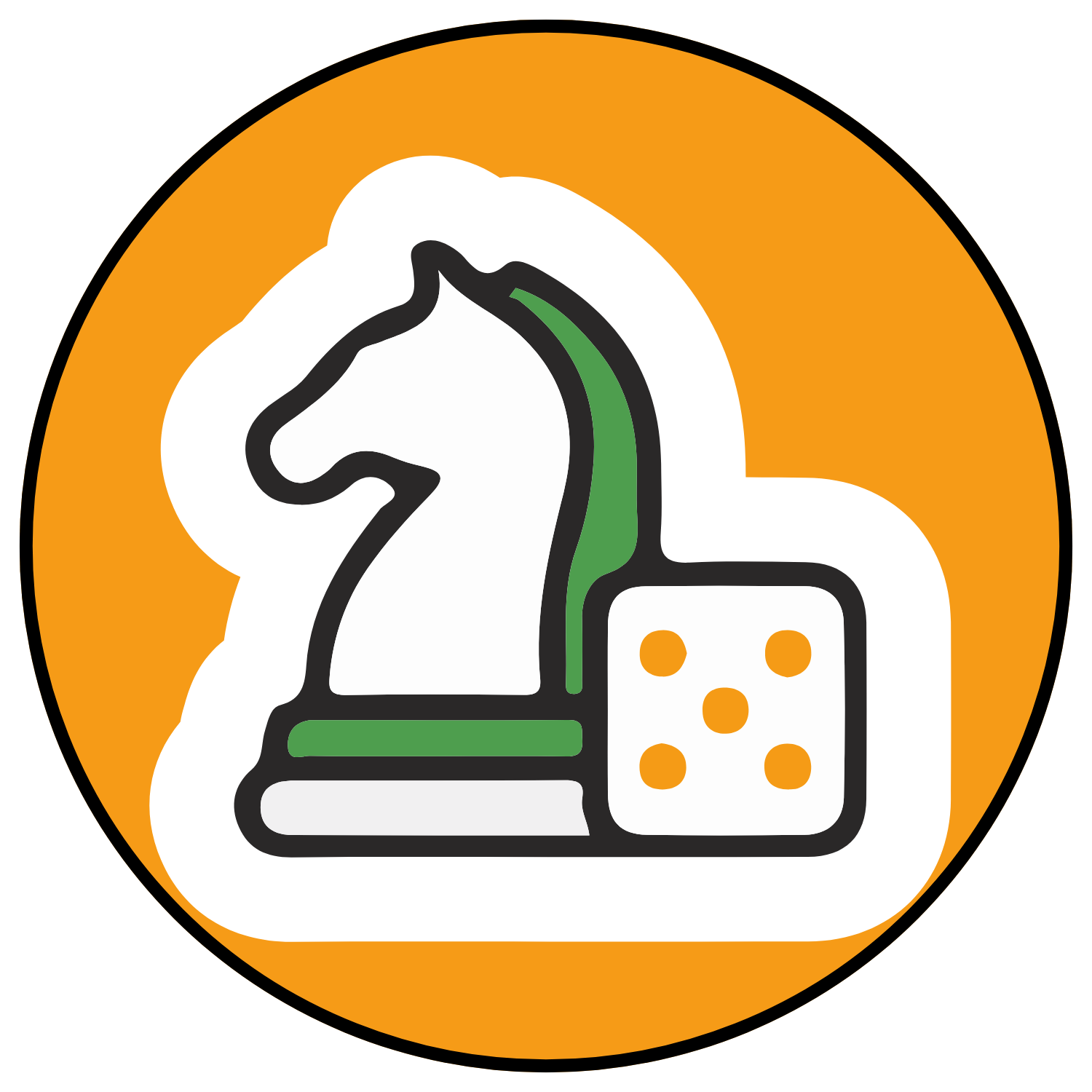Your product pages aren’t just displays—they’re the pivotal moments where browsers transform into buyers. Or don’t. The truth is stark: even a beautiful Shopify store will struggle if its product pages fail to convert. Recent data shows that optimized product pages can increase conversion rates by up to 35%, while poorly designed ones see bounce rates exceeding 75%—people literally running away from purchase opportunities.
Think of your product pages as your digital sales staff. They work 24/7, answering questions, providing specifications, addressing objections, and ultimately making the sale. But unlike a physical store, you’re not there to course-correct when a potential customer looks confused.
What makes this challenge particularly fascinating is the dual audience you’re serving. Human visitors need emotional connection, clear information, and friction-free experiences. Search engines require structured data, optimized text, and technical excellence. Neglect either audience, and your products will sit unseen or unbought.
In this guide, we’ll walk through a comprehensive approach to Shopify product page optimization that satisfies both audiences. You’ll discover how to create pages that not only rank well but convert at rates that can transform your business. Whether you’re launching a new store or revamping an existing one, these strategies will give you a significant advantage in increasingly competitive Shopify niches.
Understanding Your Target Audience for Effective Product Page Design
The foundation of exceptional product pages isn’t beautiful design or clever copy—it’s a deep understanding of who’s viewing them. Without this knowledge, you’re essentially designing in the dark, hoping to accidentally appeal to your visitors. Let’s illuminate this critical first step.

Identifying Customer Segments for Your Shopify Store
Shopify’s analytics contain treasure troves of visitor insights hiding in plain sight. Start by examining which traffic sources deliver not just visitors, but actual buyers. Look for patterns in device usage—mobile purchasers often have different browsing patterns than desktop users. Pay special attention to the “Online Store Conversion Rate” report, filtering by landing page to identify which products naturally connect with visitors.
For more granular insights, set up enhanced ecommerce tracking through Google Analytics 4, which reveals customer journey data including product list views, product detail views, add-to-carts, and checkout behaviors. This data creates a digital map of how visitors interact with your products before purchasing or abandoning.
Transform these analytics into actionable buyer personas. Beyond basic demographics, identify the psychographic factors driving purchases: Are your customers value-conscious price comparers? Status-seeking quality enthusiasts? Problem-solving researchers? Each persona will respond differently to various product page elements.
Take Sarah, a busy professional shopping for skincare products. She values ingredient transparency, has limited browsing time, and researches thoroughly before purchasing. Her product page needs would differ dramatically from Michael, an impulse buyer looking for quick gift solutions who’s heavily influenced by social proof and urgency triggers.
Mapping the Customer Journey on Your Shopify Store
Different entry points to your product pages create different contextual needs. A visitor arriving directly from Google search typically has higher purchase intent but less brand familiarity than someone clicking through from your Instagram. They already know what they want—they need confirmation they’ve found the right solution.
Internal navigation paths matter too. Visitors browsing from collection pages have already shown category interest but need compelling differentiation between similar products. Understanding these pathways helps prioritize which information appears first on your product pages.
For each journey type, identify the primary questions and objections arising at the product page stage. Direct search visitors often focus on specific features and compatibility questions. Social media visitors may need stronger brand reassurance. Email subscribers might be looking for the special offer that prompted their visit.
Tailoring Product Pages to Match Customer Intent
Different visitors arrive at different stages of readiness. Research-phase browsers need comprehensive information, comparison tools, and educational content that positions your product as the solution to their problems. Purchase-ready customers need prominent buy buttons, streamlined options, and reassurance about delivery, returns, and payment security.
This is where A/B testing becomes invaluable. Using apps like Neat A/B Testing or Split Hero, test variations of your product pages with different audiences. For high-traffic products, test single elements like button color, image count, or review placement. For lower-traffic products, test more dramatic page variations focusing on information hierarchy or layout structure.
The key elements worth testing include product titles (benefit-focused vs. feature-focused), image display (lifestyle first vs. product detail first), price presentation (with or without strikethrough pricing), and call-to-action positioning (above or below detailed information).
Technical SEO Optimization for Shopify Product Pages
With your audience clearly defined, you need to ensure they can actually find and smoothly interact with your product pages. Technical SEO creates the foundation for both discoverability and usability—and fortunately, Shopify provides numerous tools to get this right.
URL Structure and Navigation Optimization
Your URL structure sends immediate signals to both users and search engines about your content. The ideal product page URL in Shopify is concise, descriptive, and keyword-inclusive without being stuffed. Instead of the default numeric IDs, use the product name with hyphens separating words.
For example, instead of:
yourstorename.com/products/12345
Aim for:
yourstorename.com/products/organic-cotton-baby-blanket
A common Shopify SEO pitfall is collection prefixes in URLs, which create duplicate content issues. When a product appears in multiple collections, Shopify can create URLs like:
yourstorename.com/collections/baby-essentials/products/organic-cotton-baby-blanket
yourstorename.com/collections/gifts/products/organic-cotton-baby-blanket
To prevent this, navigate to your Shopify admin panel, select Online Store → Preferences, and uncheck “Show collection’s handle in product URLs when linking from a collection page.”
Implement breadcrumb navigation to further enhance user experience and SEO. Most premium Shopify themes include breadcrumbs, but ensure yours uses proper schema markup so search engines recognize this navigational structure. This appears in the theme’s code as <script type="application/ld+json"> containing BreadcrumbList data.
Page Speed Optimization Techniques
Page speed significantly impacts both conversion rates and SEO rankings. A one-second delay in page load time can reduce conversions by 7%. Product pages tend to be particularly vulnerable to speed issues due to multiple images and interactive elements.
Image optimization should be your first priority. Before uploading product images, compress them using a tool like TinyPNG or ImageOptim. Aim for file sizes under 200KB while maintaining visual quality. Dimensions matter too—oversized images force browsers to resize them on the fly, consuming processing power. Size your main product images at approximately 2048px for the largest dimension to balance quality with performance.
Take advantage of Shopify’s built-in lazy loading, which delays loading off-screen images until users scroll near them. This feature is automatically enabled in newer themes but may need activation in older ones.
Review your theme’s code for optimization opportunities. Unnecessary apps often inject JavaScript that slows page loading. Audit your installed apps quarterly, removing any that aren’t delivering clear value. For essential apps, prioritize those offering “deferred loading” options that don’t block initial page rendering.
Leverage Shopify’s world-class content delivery network (CDN) by ensuring all media is hosted on your Shopify store rather than externally. This distributed network ensures your product images load quickly for visitors worldwide without any additional configuration.
Mobile Optimization for Product Pages
With mobile commerce accounting for over 70% of traffic to Shopify stores, mobile optimization isn’t optional—it’s essential. Testing mobile usability should be a regular practice, not a one-time project.
Use Google’s Mobile-Friendly Test and PageSpeed Insights to identify specific mobile issues. Common problems include touch targets (like buttons and links) that are too small or positioned too closely together, text that’s difficult to read without zooming, and horizontal scrolling caused by oversized elements.
For Shopify-specific mobile optimization, adjust your theme settings to prioritize critical information in the mobile view. On most devices, viewers should see the product title, primary image, price, and add-to-cart button without scrolling. Secondary information should follow in order of importance.
Mobile-specific conversion elements make a substantial difference. Ensure add-to-cart buttons have at least a 44×44 pixel touch area (Apple’s recommended minimum) and stand out visually. Implement “sticky” add-to-cart buttons that remain visible as users scroll through longer product descriptions on mobile. Simplify the checkout process by enabling Shop Pay or other accelerated checkout options that eliminate the need for mobile typing.
Structured Data Implementation
Structured data acts as a translator between your product pages and search engines, clearly communicating what you’re selling, at what price, with what ratings, and more. This information can dramatically improve how your products appear in search results, potentially displaying rating stars, price, availability, and other rich snippets that increase click-through rates.
Product schema markup is the most important structured data type for Shopify pages. Essential properties include:
- name (product name)
- image (product image URL)
- description (product description)
- offers (price, currency, availability)
- brand (product brand)
- sku (stock keeping unit)
- gtin8/gtin13/gtin14/mpn (product identifiers)
Many Shopify themes include basic product schema, but often miss important properties. To implement comprehensive schema, you can use a dedicated app like JSON-LD for SEO or edit your theme code directly, adding the markup inside <script type="application/ld+json"> tags in the product template.
Review and rating schema integration requires connecting your review app with your structured data. Apps like Loox and Judge.me automatically add review schema to your product pages, displaying star ratings in search results. This social proof can increase click-through rates by up to 35%.
On-Page SEO Elements for Shopify Product Pages
With technical foundations in place, we can focus on the content elements that help your products rank higher and connect more effectively with potential customers. On-page SEO for product pages requires a delicate balance between optimization for search engines and persuasive content for humans.
Keyword Research and Implementation
Effective keyword research for product pages goes beyond general SEO tools. Look for terms that indicate high purchase intent, not just high search volume. Tools like Ahrefs or SEMrush allow filtering for keywords containing terms like “buy,” “best,” or “top,” which typically indicate stronger purchase intent.
For Shopify-specific keyword insights, analyze search terms from your Shopify search bar (found in Analytics → Behavior → Top online store searches) to discover the exact language customers use when looking for products like yours. These internal search terms often reveal valuable long-tail keyword opportunities that external tools miss.
Competitor analysis provides another rich source of product keywords. Examine the product titles, descriptions, and metadata of successful competitors using similar tools or browser extensions like SEOquake. Look particularly at sites ranking well for your target terms.
Strategic keyword placement follows a clear hierarchy. Your primary keyword should appear in the:
- Product title (H1 heading)
- URL
- First paragraph of the product description
- At least one image alt tag
- Meta title and description
Secondary and long-tail keywords should be distributed naturally throughout the product description, feature bullets, and FAQ sections. The key is natural integration—keyword stuffing not only penalties from search engines but alienates human readers.
Optimizing Meta Elements
Meta titles and descriptions function as your product’s advertisement in search results, directly impacting click-through rates. The ideal meta title follows a proven formula: Primary Keyword | Compelling Benefit | Brand Name.
For example: “Organic Cotton Baby Blanket | Hypoallergenic & Ultra-Soft | CozyBaby”
Keep meta titles under 60 characters to prevent truncation in search results. For meta descriptions, aim for 120-155 characters that highlight your unique selling points, include secondary keywords naturally, and contain a clear call-to-action. Including price points and special offers in meta descriptions can significantly increase click-through rates for purchase-ready searchers.
Canonical tags prevent duplicate content issues when products appear in multiple collections or have variant pages. Shopify automatically implements canonical tags for product pages, but verify they’re working correctly by viewing your page source and looking for <link rel="canonical" href="https://yourstorename.com/products/product-name">.
For products with many variants (like multiple colors or sizes), Shopify creates a single canonical URL pointing to the primary product page. This consolidates ranking signals and prevents variants from competing with each other in search results.
Content Optimization Strategies
Product descriptions face dual challenges: they must contain enough keyword-rich content for SEO while being persuasive enough to drive conversions. The solution lies in structured, benefit-focused content that naturally incorporates keywords while addressing customer needs.
Start with a compelling opening paragraph that includes your primary keyword and establishes the key benefit. Follow with scannable feature bullets that combine specifications with benefits—the “what” and the “why it matters.” Address common objections proactively, and conclude with a paragraph reinforcing the primary emotional and practical benefits.
Enhanced content elements significantly boost both SEO and conversions. Implement FAQ sections using proper schema markup (<script type="application/ld+json"> with FAQPage type) to increase your chances of appearing in Google’s featured snippets. Structure FAQs around common customer questions, natural keyword phrases framed as questions, and objection-handling opportunities.
For products with multiple variants, create comparison tables highlighting the differences between options. These tables improve user experience by simplifying decision-making while providing structured content that search engines can easily interpret. For example, a table comparing different sizes or material options with their respective benefits helps customers find their perfect match while adding valuable indexable content.
Visual Elements and Media Optimization
Visual content drives emotional connection and provides essential information that text alone cannot convey. For many products, imagery is the single most influential factor in purchase decisions. Let’s optimize these crucial elements for both engagement and technical performance.
Product Image Optimization
High-converting product imagery follows clear quality standards. Main product images should be at least 1000px on the longest side (ideally 2000px for zoom functionality) and shot on a clean, consistent background.

Multi-angle shots are essential—aim for a minimum of 5-7 images for most products, including:
- Main product shot (straight-on view)
- 45-degree angle view
- Back view
- Close-up details of important features
- Size/scale reference with familiar objects
- Product in use/context (lifestyle shot)
- Packaging or unboxing sequence for premium products
Consistency in lighting, background, and style creates a professional impression that builds trust. For products with color variants, show each color option on the same model or in identical settings to help customers accurately compare options.
Technical image optimization balances quality with performance. Beyond compression (discussed earlier), proper alt text is crucial for both accessibility and SEO. Each image should have unique, descriptive alt text that includes relevant keywords naturally. For example, instead of generic “product front view,” use “organic cotton baby blanket with hypoallergenic stitching front view.”
In Shopify, add alt text when uploading images or edit existing images by going to Products → select product → Images section → click an image → Add alt text. This small step significantly improves accessibility for visually impaired shoppers while sending valuable relevance signals to search engines.
Video Content Integration
Product videos can increase conversion rates by 80% when implemented effectively. Different products benefit from different video approaches:
- Demonstration videos showing the product in use are ideal for items with moving parts, tools, or anything with a learning curve
- Feature highlight videos work well for products with multiple benefits that aren’t immediately visible
- Comparison videos help customers understand differences between models or variants
- Testimonial videos featuring real customers provide powerful social proof
- How-to videos demonstrate proper usage and care, reducing returns
For video hosting, consider the tradeoffs carefully. Self-hosted videos (uploaded directly to Shopify) maintain your domain authority and keep visitors on your site, but may impact page load times. Third-party platforms like YouTube or Vimeo offload bandwidth demands but add external links that could potentially distract shoppers.
A hybrid approach often works best: use embedded Vimeo (preferred over YouTube for its cleaner interface and lack of competing product ads) with custom thumbnails and minimal player branding. Set videos to autoplay on mute when they enter the viewport to capture attention without being intrusive.
User-Generated Content Display
User-generated content (UGC) delivers authenticity that professional photography can’t match. Customer photos and videos showing real-world usage create trust, demonstrate versatility, and help potential buyers envision the product in their own lives.
Implement UGC collection through apps like Stamped.io, Junip, or Loox, which allow customers to submit photos and videos with their reviews. Some apps offer incentives like discount codes for media submissions, significantly increasing participation rates.
Display UGC effectively by creating a dedicated gallery section on product pages, separating it visually from your professional images while maintaining consistent layout style. For products with strong visual appeal (clothing, home décor, etc.), feature a rotating selection of customer images in your main image carousel, clearly labeled as customer photos.
Always manage permissions properly—your review app should handle consent capture, but verify its compliance with privacy regulations. Curate submissions to highlight diverse usage scenarios and positive experiences while maintaining quality standards. Particularly compelling customer content can be elevated to your main product imagery or social media with proper attribution, creating a virtuous cycle of content generation.
Conversion Rate Optimization for Shopify Product Pages
With discoverability, information, and visual elements optimized, we now focus on actively converting visitors to customers. These strategies directly impact your bottom line by increasing the percentage of product page viewers who become buyers.

Trust Signals and Social Proof
Trust is the foundation of online purchasing decisions. Without the ability to physically examine products, customers rely on various signals to assess trustworthiness. Reviews stand at the forefront of these signals—93% of consumers say online reviews impact their purchasing decisions.
Implement a robust review system using specialized Shopify apps rather than the platform’s basic functionality. Apps like Judge.me, Loox, or Stamped.io offer features like review request automation, photo/video uploads, and question-and-answer functionality. The ideal review system should:
- Display an average star rating near the top of the product page
- Show total review count prominently
- Allow filtering by rating, date, and media inclusion
- Highlight verified purchaser reviews
- Include customer attributes relevant to your products (height/build for clothing, skin type for cosmetics, etc.)
Encourage quality reviews by automating post-purchase email sequences, offering small incentives (like 10% off next purchase), and making the review submission process mobile-friendly. The timing matters—send review requests after customers have had sufficient time to experience the product, typically 7-14 days after delivery.
Beyond reviews, implement trust badges in strategic locations. Near checkout buttons, display payment security symbols and encryption indicators. In product descriptions or separate policy sections, highlight guarantee information, return policies, and authenticity certifications relevant to your products.
Call-to-Action Optimization
Your add-to-cart button deserves meticulous attention—it’s the pivotal conversion element on the entire page. Size matters: make the button large enough to stand out visually (at least 44px height for mobile usability) but not comically oversized. Position it where it appears naturally in the customer journey, typically after the variant selectors and price, but before detailed product information.
Color psychology influences conversion rates significantly. Your button should contrast with the page background while maintaining brand consistency. Common high-converting button colors include action-oriented hues like bright blue, orange, or green. What’s most important is contrast and consistency—your add-to-cart button should be instantly recognizable across your entire store.
Button text impacts conversion too. Instead of generic “Add to Cart,” test action-oriented alternatives like “Get Yours Now,” “Claim Your [Product],” or “Yes, I Want This!” for potentially higher conversion rates. For products requiring size/color/variant selection, use dynamic button text that changes from “Select Options” to “Add to Cart” once all required choices are made.
For browsers not yet ready to purchase, secondary CTAs maintain engagement and capture value. Implement wishlist functionality through apps like Wishlist Plus or Swym, positioned as a less-committal alternative beside your main add-to-cart button. For high-consideration products, email capture forms offering detailed product information, buying guides, or discount codes provide value while building your marketing list.
Pricing and Promotion Display
Pricing presentation influences perceived value and urgency. When displaying sale prices, show both the original and discounted prices, with the original price in strikethrough formatting and a smaller font. Calculate and display the percentage or dollar amount saved to emphasize the deal’s value.
Psychological pricing techniques like charm pricing (ending prices with .99 or .97) continue to show conversion benefits in testing. For premium products, however, whole-number pricing ($500 rather than $499) can sometimes convey higher quality and reduce price sensitivity.
Bundle pricing presentation should clearly demonstrate the value proposition. Show individual component prices, the bundle price, and the amount saved prominently. Create a visual hierarchy emphasizing the complete solution rather than individual components.
Urgency and scarcity elements tap into powerful psychological triggers when implemented honestly. For genuinely limited inventory, display stock counters showing remaining units for products with fewer than 20 items available. For flash sales or time-limited promotions, countdown timers create urgency while improving transparency about offer deadlines.
The key to effective urgency triggers is authenticity—false scarcity damages trust severely when discovered. Only implement these elements for genuinely limited products or time-bound offers.
Cross-Selling and Upselling Features
Strategic product recommendations can increase average order value by 10-30% while enhancing the shopping experience. Implement related products in two key locations: mid-page (after primary product information but before reviews) and post-add-to-cart (in the cart drawer or dedicated popup).
Manual vs. automated recommendations present different advantages. Manual curation ensures perfect relevance but requires maintenance as your catalog changes. Automated systems (through apps like Also Bought, Frequently Bought Together, or Shopify’s built-in recommendations) scale effortlessly but may occasionally suggest less-than-ideal pairings.
The ideal approach combines both: use automated systems for the heavy lifting, but manually review and adjust recommendations for your top-selling products to ensure perfect complementarity. Ensure recommendations include a mix of:
- Complementary products that enhance the primary purchase (accessories, add-ons)
- Alternative options in case the main product isn’t quite right (similar items with different features)
- Next logical purchases based on the customer journey (related items typically bought later)
For particularly effective combinations, create pre-configured bundles with slight discounts incentivizing multi-product purchases. Display these as “Complete the Set,” “Perfect Pairing,” or “Customer Favorite Combination” to emphasize their popularity and value.
Advanced Strategies for Shopify Product Page Excellence
Building on core optimization practices, these advanced strategies help your product pages evolve from good to exceptional. They represent the frontier of Shopify optimization, creating experiences that feel personally crafted for each visitor.
Personalization Techniques
Dynamic content transforms static product pages into responsive experiences tailored to each visitor’s behavior and preferences. Personalization apps like Nosto, LimeSpot, or Prisync enable showing different content based on a visitor’s:
- Visit history and previously viewed products
- Purchase history and customer tier
- Referral source (search, social, email, etc.)
- Browse behavior and time on site
- Cart contents and abandoned items
Implement customer segments to deliver targeted experiences. For example, returning visitors might see recently viewed items and personalized recommendations, while first-time visitors receive more educational content and trust-building elements. Premium customers could automatically see exclusive variants or bundle options not immediately visible to others.
Geo-location customization dramatically improves relevance for international stores. Configure your product pages to automatically display:
- Local currency and payment methods
- Country-specific shipping information and delivery estimates
- Regional promotions or pricing
- Seasonally appropriate product variants and imagery (e.g., summer products for Australia during North American winter)
Apps like Geolocation Country Redirect or Currency Converter Plus enable these features with minimal configuration, creating a shopping experience that feels local rather than international.
A/B Testing Framework for Continuous Improvement
Systematic testing transforms opinion-based design into data-driven optimization. Establish a methodical testing framework to avoid haphazard experimentation. Start by prioritizing test elements using the PIE framework:
- Potential: How much improvement can reasonably be expected?
- Importance: How many visitors will this affect?
- Ease: How difficult is the test to implement?
High-traffic elements like product titles, main images, price display, and primary CTAs should take testing priority. For each test, create a clear hypothesis statement: “Changing [element] to [variation] will [expected outcome] because [rationale].”
Sample size determination prevents premature conclusions. Use calculators like Optimizely’s Sample Size Calculator to determine how many visitors you need for statistical significance. As a general rule, don’t conclude tests until you’ve had at least 100 conversions per variation and run the test for at least two full business cycles (typically 2-4 weeks) to account for traffic fluctuations.
Shopify-specific A/B testing can be implemented through apps like Convert, Neat A/B Testing, or Google Optimize. These tools allow testing without coding knowledge, though they vary in sophistication. For high-traffic stores, enterprise-level tools like VWO or Optimizely provide more advanced segmentation and analytics capabilities.
Omnichannel Consistency
Modern shopping journeys span multiple channels and touchpoints. Creating consistency across these experiences prevents confusion and builds trust. Align your product information across platforms by creating a centralized product information management (PIM) system—a single source of truth for all product details.
Ensure your social media product presentations mirror your Shopify product pages in tone, key selling points, and visual style. When products appear in Instagram posts or Facebook shops, use consistent naming, descriptive patterns, and benefit framing. This consistency reinforces your brand identity while preventing the cognitive dissonance that occurs when product presentations vary across channels.
For email marketing, maintain visual and information consistency with your product pages while adapting to the format’s constraints. Use identical product images, highlight the same key benefits, and maintain consistent pricing and promotional language. When featuring products in email campaigns, link directly to relevant product pages with UTM parameters for attribution tracking.
Leverage Shopify’s multi-channel capabilities to maintain this consistency automatically. Use Shopify Markets for region-specific adjustments while maintaining core product identity. For marketplace selling, optimize your product feed through apps like Feedonomics or DataFeedWatch, which format your product information appropriately for each channel while preserving essential content.
Measuring Success and Ongoing Optimization
Optimization is not a one-time project but an ongoing process of measurement, analysis, and refinement. Establishing clear metrics and procedures ensures continuous improvement of your product pages.
Key Performance Indicators for Product Pages
Track these essential metrics to gauge product page performance:
- Page-specific conversion rate: The percentage of product page visitors who purchase the item, the most direct measure of page effectiveness
- Add-to-cart rate: Visitors who add the product to cart divided by total page visitors, identifying issues in the initial conversion step
- Cart abandonment rate: The percentage of users who add products to cart but don’t complete purchase, highlighting potential issues with shipping, pricing, or checkout
- Average time on page: How long visitors typically spend before taking action, with both extremes (very short or very long) potentially indicating problems
- Scroll depth: How far visitors scroll through the page, revealing whether important content is being seen
- Return rate: The percentage of sold products that are returned, which may indicate misalignment between product presentation and reality
Set up enhanced tracking in Shopify by implementing Google Analytics 4 with e-commerce events. Create custom event tracking for key interactions like variant selection, “More Information” clicks, video plays, and review expansions. These micro-conversions provide insights into the customer decision journey beyond the binary purchased/didn’t purchase outcome.
Create custom reports combining these metrics with segments based on traffic source, device type, and user behavior. These segmented reports often reveal optimization opportunities that aggregate data obscures—for example, mobile users might struggle with specific page elements that desktop users navigate easily.
Iterative Improvement Process
Establish a regular optimization schedule to prevent product pages from stagnating. Quarterly comprehensive audits should examine all aspects of your top-selling products’ pages, from technical performance to content freshness. Monthly mini-reviews can focus on conversion metrics and competitor changes.
Seasonal updates are crucial for many product categories. Adjust imagery and messaging to align with current seasons, upcoming holidays, or relevant events. Winter clothing should feature cold-weather lifestyle imagery during appropriate months; gift-appropriate items should highlight gifting occasions as they approach.
Stay current with Shopify’s platform updates and new features. The platform regularly releases enhancements that can improve product page performance, such as improved image handling, enhanced checkout options, or new metafield capabilities. Subscribe to Shopify’s developer changelog and merchant newsletter to receive alerts about new capabilities that could benefit your product pages.
As you gather data and implement improvements, document your findings and create internal best practice guidelines. This knowledge repository becomes increasingly valuable as your store grows, ensuring new products benefit from previous learnings rather than repeating past optimization cycles.
References
- Shopify. (2024). How To Improve Your Ecommerce Product Page SEO. Shopify Blog. https://www.shopify.com/blog/ecommerce-product-page-seo
- TinyIMG. (2024). Product page SEO in Shopify: 10+ best practices. https://tiny-img.com/blog/shopify-product-seo/
- Catsy. (2025). Master Guide to B2B Shopify Product Page Optimization. https://catsy.com/blog/b2b-product-pages-shopify/
- BSSCommerce. (n.d.). All About Ecommerce Product Page Optimization For Better Conversions. https://bsscommerce.com/shopify/optimize-your-product-page-for-better-conversions/
- Instant Team. (2025). 15 Shopify product page SEO best practices to gain organic traffic. https://instant.so/blog/shopify-product-page-seo
- Acowebs. (2025). How to Enhance the Performance of Your Shopify Product Pages. https://acowebs.com/optimize-shopify-product-pages/
Ready to supercharge your Shopify store’s sales with perfectly optimized campaigns and discount codes? Growth Suite is a Shopify app that helps you analyze visitor behavior, create personalized offers, and boost conversions with real-time limited discounts. Its AI-driven campaign engine automatically identifies the perfect moment to present offers based on buying intent, significantly increasing your conversion rates. Install Growth Suite with a single click and start seeing results today!
Don’t forget to checkout our other articles;
Conversion Rate Optimization for Shopify Stores
The Anatomy of a High-Converting Shopify Product Page
Product Photography That Sells: Visual Optimization for Shopify
Crafting Product Descriptions That Convert: Templates and Examples for Shopify
Social Proof on Product Pages: Reviews, Testimonials, and Trust Badges
Advanced Product Page Features That Boost Shopify Conversions





[…] Shopify Product Page Optimization […]